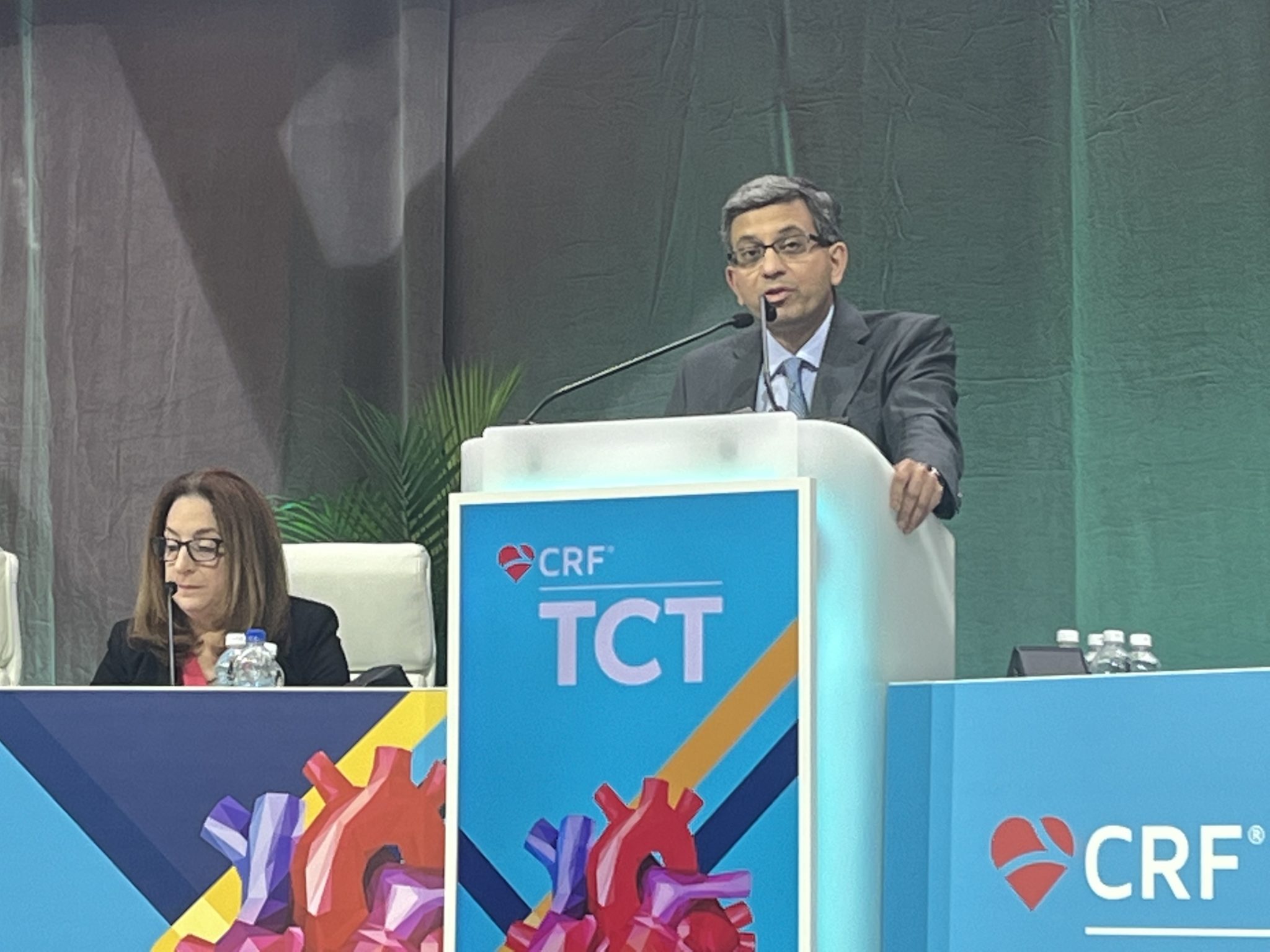
Among patients undergoing transfemoral transcatheter aortic valve implantation (TAVI) the use of a cerebral embolic protection device (Sentinel, Boston Scientific) did not have a significant effect on the incidence of periprocedural stroke.
However, a difference in rates of disabling stroke, favouring the use of cerebral embolic protection device, may yet confer some benefit to its use, researchers claim.
These are the conclusions of the PROTECTED TAVR study, presented during a late-breaking clinical science session at the 2022 Transcatheter Cardiovascular Therapeutics meeting (TCT, 16–19 September, Boston, USA) by Samir Kapadia (Cleveland Clinic, Cleveland, USA) and simultaneously published in The New England Journal of Medicine.
The trial randomised a total of 3,000 aortic stenosis patients from across 51 centres in North America, Europe and Australia to undergo TAVI with or without the use of a cerebral embolic protection device, with a primary endpoint of stroke within 72 hours after the procedure, or before discharge.
A total of 1,487 patients completed follow-up in the control group and 1,483 in the cerebral embolic protection arm. Use of Sentinel was found to be feasible in 94.4% of patients, and safe, with no major complications.
Reporting the study’s findings at TCT, Kapadia reported that the incidence of stroke within 72 hours after TAVI or before discharge did not differ significantly between the cerebral embolic protection group and the control group (2.3% vs. 2.9%; difference, −0.6 percentage points; 95% confidence interval, −1.7 to 0.5; p=0.30).
Significantly, according to Kapadia, disabling stroke occurred in 0.5% of the patients in the cerebral embolic protection group and in 1.3% of those in the control group.
There were no substantial differences between the cerebral embolic protection group and the control group in the percentage of patients who died (0.5% vs. 0.3%); had a stroke, a transient ischaemic attack, or delirium (3.1% vs. 3.7%); or had acute kidney injury (0.5% vs. 0.5%), Kapadia reported.













